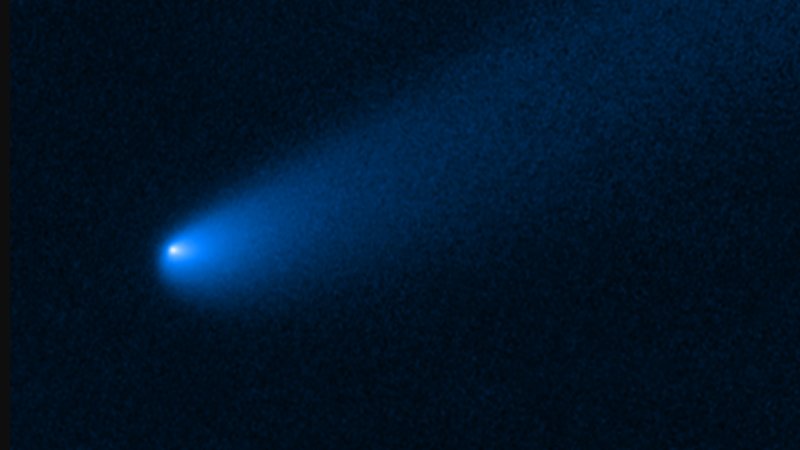Eddie Gonzales Jr. – MessageToEagle.com – During its several billion miles long journey toward the Sun, a wayward young comet-like object orbiting among the giant planets has found a temporary parking place along the way.
The object has settled near a family of captured ancient asteroids, called Trojans, that are orbiting the Sun alongside Jupiter. This is the first time a comet-like object has been spotted near the Trojan population.
Hubble Space Telescope observations reveal the vagabond is showing signs of transitioning from a frigid asteroid-like body to an active comet, sprouting a long tail, outgassing jets of material, and enshrouding itself in a coma of dust and gas. Credits: NASA, ESA, and B. Bolin (Caltech)
The unexpected visitor belongs to a class of icy bodies found in space between Jupiter and Neptune. Called “Centaurs,” they become active for the first time when heated as they approach the Sun, and dynamically transition into becoming more comet-like.
Computer simulations show that the icy object, called P/2019 LD2 (LD2), probably swung close to Jupiter about two years ago. The planet then gravitationally punted the wayward visitor to the Trojan asteroid group’s co-orbital location, leading Jupiter by about 437 million miles,
LD2 object shows signs of comet activity, such as a tail, outgassing in the form of jets, and an enshrouding coma of dust and gas.
“Only Hubble could detect active comet-like features this far away at such high detail, and the images clearly show these features, such as a roughly 400,000-mile-long broad tail and high-resolution features near the nucleus due to a coma and jets,” said lead Hubble researcher Bryce Bolin of Caltech in Pasadena, California, in a press release.
Although LD2’s location is surprising, Bolin wonders whether this pit stop could be a common pull-off for some sunward-bound comets.
“This could be part of the pathway from our solar system through the Jupiter Trojans to the inner solar system,” he said.
The unexpected guest probably will not stay among the asteroids for very long. Computer simulations show that it will have another close encounter with Jupiter in about another two years.
The researchers say the objects spend as much or even more time around the giant planets, gravitationally pulling on them — about 5 million years — than they do crossing into the inner system where we live.
“Inner system, ‘short-period’ comets break up about once a century,” Lisse explained. “So, in order to maintain the number of local comets we see today, we think the bucket brigade has to deliver a new short-period comet about once every 100 years.”
Once the comet gets kicked out of Jupiter’s orbit and continues its journey, it may meet up with the giant planet again.
“Short-period comets like LD2 meet their fate by being thrown into the Sun and totally disintegrating, hitting a planet, or venturing too close to Jupiter once again and getting thrown out of the solar system, which is the usual fate,” Lisse said. “Simulations show that in about 500,000 years, there’s a 90% probability that this object will be ejected from the solar system and become an interstellar comet.”
Written by Eddie Gonzales Jr. – MessageToEagle.com Staff







